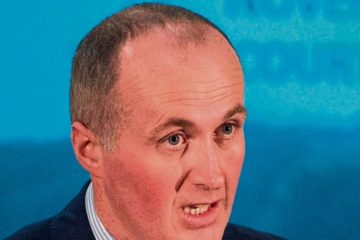Germany regards itself as one of the most important agricultural countries in Europe but cracks are appearing in its once robust farming structure.
Like every other country in the world, the dairy industry in Germany is under intense pressure and farmers are losing money. Some are even questioning the benefits of remaining in the EU.
Current milk prices are hovering around the 20-25c/l, but fixed costs alone are 30c/l on many German farms.
Germany benefits the most from the CAP and receives the highest amount of direct payments from Brussels, totalling €5.1bn in 2014.
However, although this huge total provided support for over 320,000 beneficiaries, almost two-thirds received less than €10,000.
While farms have consolidated, with a four-fold drop in holdings, and a consequent increase in scale over the last 45 years, Germany remains the biggest milk producer in the EU with €11bn in annual dairy sales.
In terms of livestock, there are around 4.6m dairy cows with 76,500 milk producers equating to an average herd size of 60 cows.
Approximately 47pc of German dairy cows are in herds of 100 or more as of May 2015, and the number of 500 cow herds continues to grow.
There is a huge wave of uncertainty sweeping across the dairy industry in Germany as farmers there try to stay in production, contending with some of the highest costs of production in Europe.
As more farmers start to produce milk at a loss, some are starting to leave the industry, a trend that has been rare in recent times.
Eberhard Hetzner is a former chief executive officer of the Federation of German Milk Industry who highlighted the fact that a number of farmers are ‘hopping’ from one processor to another to try and achieve a better pricing deal, but it’s not always the best decision.
“DLK is the biggest milk processor in Germany, handling up to 25pc of all the milk produced in the country,” said Mr Hetzner.
“The company has 8,300 dairy farmers in its group and is followed by Mueller which is the biggest private processer in the country.
“When the prices started to fall, farmers started changing their processor but in some cases this shift can take up to two years to finalise so it can be a huge risk,” he added. “When the quota system finished, milk production rose by around 3.5pc in Germany, but when the demand for produce from China and Russia fell in 2015, there remained a huge glut of milk on the market.
“Around 10 years ago farmers stopped all deliveries for three to four months to allow the market time to catch up with demand and that action seemed to achieve its objectives.
“Today farmers need to consider something similar as there is simply just too much milk flooding the market.
“When the quotas finished, milk prices were reasonable and some farmers invested quite a lot of money only to be caught in the price crash.
“Being a big dairy farmer is not always beautiful. In my opinion, it will be the small mixed farms that will survive this crisis.
“The market will remain where it is until late into 2017 but the challenge is for farmers to remain in business until then.
“Farmers are worried and although the European Commission is starting to see sense in paying farmers to reduce their supply, I don’t think Brussels has enough money to pay farmers enough to justify the cuts.”


